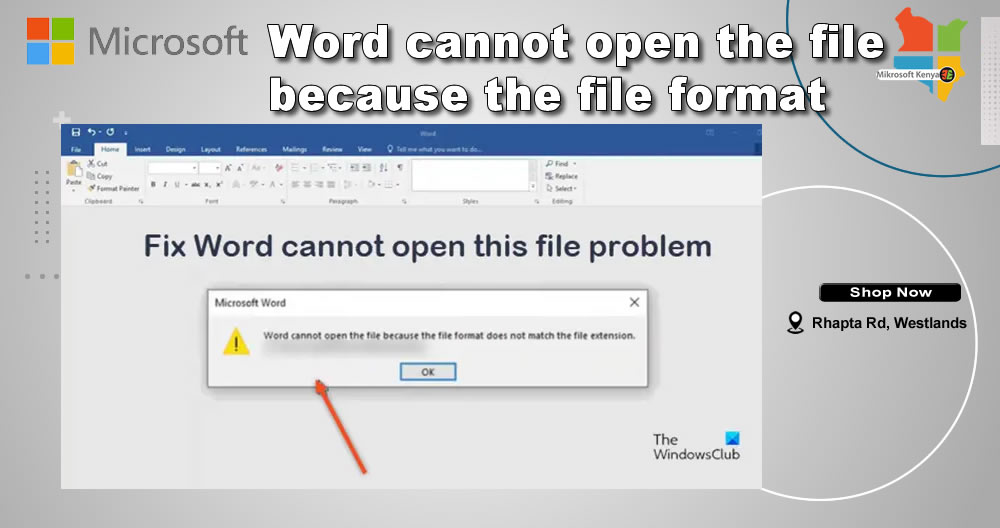
Windows 10 Insider Build 14257
As I mentioned last week, we’re at the beginning of a new development cycle for our next feature update to Windows 10. Teams are still early in their new feature work and changes in this build are mostly about laying the foundation for those features to start coming into builds. So you won’t see many visible changes quite yet.
He also notes that the team is seeing several bugs, including some reported by Insiders via the Feedback app. Here’s a look at some of the fixes in this latest build:
- The issue of periodic app crashes or other memory related app errors due to a memory management change has been resolved. If you were having issues launching the Git client for Windows, you should now be able to launch it in this build.
- The Connect button now shows up again in Action Center.
- F12 Developer Tools will now load correctly Microsoft Edge.
- We fixed an issue where suggested apps were being shown on the Start menu even though “Occasionally show suggestions in Start” was turned off under Settings > Personalization > Start.
- We fixed an issue where if you try to change the Lock screen picture with “Get fun facts, tips, tricks and more on your lock screen” turned on it will revert back to the default.
- We fixed an issue where the positions of desktop icons get jumbled up after switching DPI settings from 100% to 150% or 175%.
- We also fixed an issue where pasting files into a new .zip file (compressed folder) in File Explorer by either right-clicking or Control-V would not work. You should be able to paste tiles into new .zip files just fine now.
And, as with any preview build, here is a list of the known issues in Build 14257:
- If you choose “Reset This PC” under Settings > Update & Security > Recovery – your PC will be in an unusable state. There is no workaround if your PC gets into this state and you will need to reinstall Windows. This issue will be fixed in the next build. You can still rollback to the previous build if for some reason this build doesn’t work out for you. This bug also existed in Build 14251 so please avoid resetting your PC on these builds.
- You might see a WSClient.dll error dialog after logging in. We’re working on a fix for this but as a workaround, you can run the following in Command Prompt with administrative rights: schtasks /delete /TN “\Microsoft\Windows\WS\WSRefreshBannedAppsListTask” /F. This issue will be fixed in the next build.
- The front-facing camera is unusable on PCs with Intel RealSense resulting in being unable to use Windows Hello or any other apps that utilize the front-facing camera.
- After logging in to your PC, you may hit a UI issue in which Airplane Mode will incorrectly show as “on” even though your PC’s Wi-Fi is powered on. This is due to a timing issue between how the UI communicates and waits for the underlying platform to respond. The UI for Airplane Mode essentially does not wait long enough for the device’s physical radios to power on before reporting the current state. You can toggle the Airplane Mode on and off to get Airplane Mode back to showing the correct state.
New Fun Set of Images for Windows Insiders
In addition to the new build released today, Microsoft is retiring the Ninja Cat images from last year. Now, to celebrate the “Year of the Monkey” we can download images of a monkey riding a cloud…? Well, why not right?
Microsoft has made this wallpaper available for Windows Phone, PCs, and the Microsoft Band.

Finishing Up
As with all major Microsoft updates or upgrades, a restart is required to complete the installation (which is a full in-place upgrade). You can schedule the restart for a time that works best for you. For more on that, read our guide on how to schedule Windows 10 Update restarts.
After the installation of this new build completes, you can hit Windows Key+R to bring up the Run dialog and type: winver and hit Enter. That will bring up the following screen showing the new build as 14257.
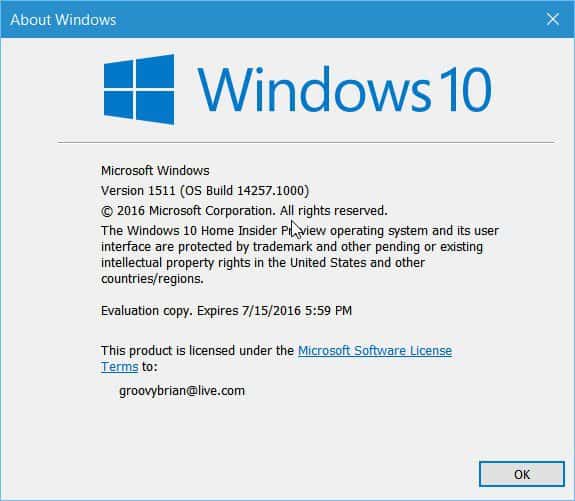
You’ll also see Build 14257.rs1_release.160131-1800 at the lower-right corner of the screen just above the notification area.
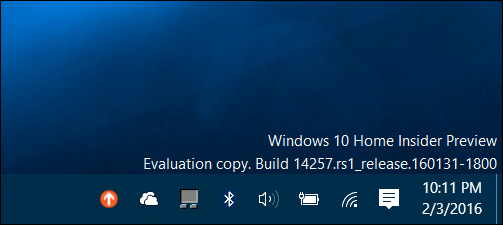
After you run the update, let us know how things are working for you in the comments below. Also, for more in-depth conversation about Windows 10 in general, join our free Windows 10 Forums.
How to Save Windows 10 Spotlight Lock Screen Pictures
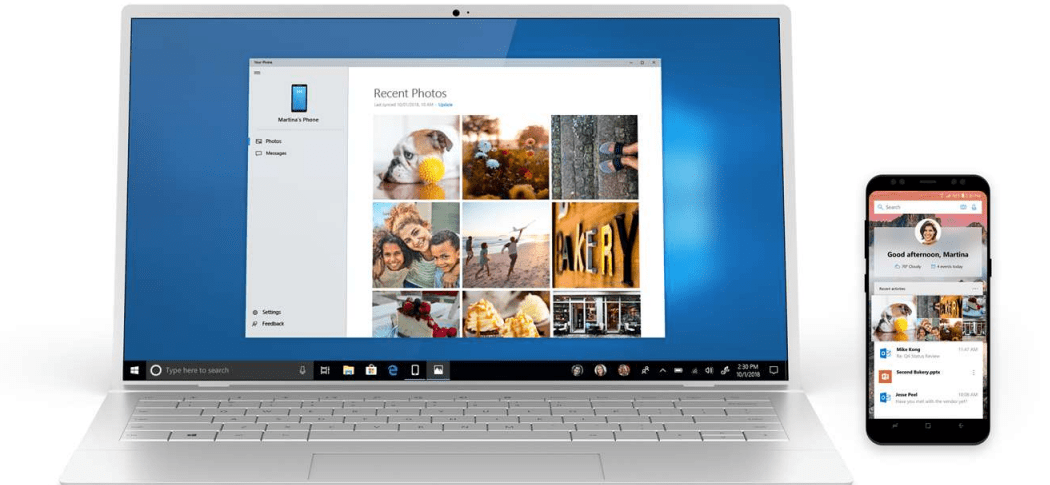
The Windows 10 Spotlight feature provides beautiful backgrounds on your Lock Screen. These images are wallpaper worthy, too. Here’s how to find and save them.
Windows 10 includes a limited collection of desktop backgrounds to choose from. And, the Windows Spotlight feature, previously limited to Windows 10 Home, became available in the Pro edition via the November Update.
It provides a travel log of stunning background images taken from around the world on your Lock Screen. Many of these are desktop-worthy, too. Here’s how you can find and collect those pictures.
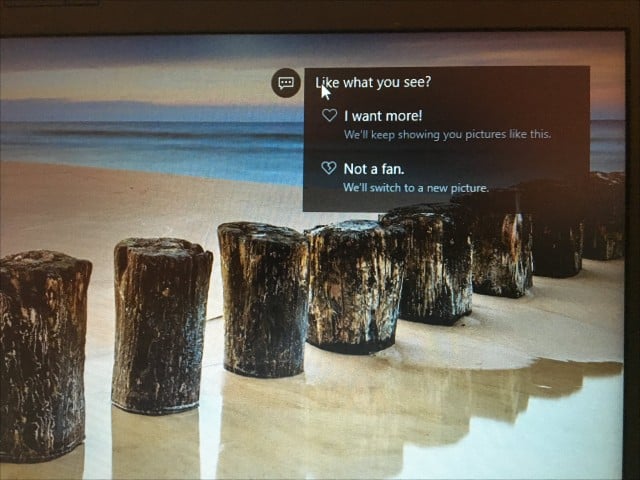
Find Windows Spotlight Lock Screen Pictures
Windows Spotlight Images are not stored in the most obvious of places. First, open your user folder, press Windows key + R, then type: %userprofile% and hit Enter.

When File Explorer opens up, you’ll need to turn on Show hidden files and folders. Click the View tab, then check the box: Hidden items within the Show/Hide group.
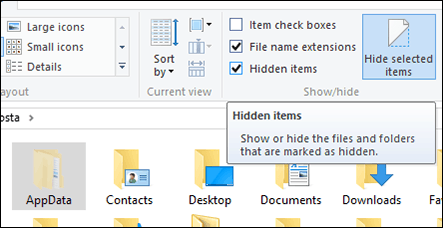
The AppData folder will now appear in your User folder. Open it then navigate to Local > Packages > Microsoft.Windows.ContentDeliveryManager_cw5n1h2txyewy > LocalState > Assets.
The images will appear as blank files, select all of them Control + A then copy with Control + C. Create a new folder in your Documents folder or on the Desktop, then paste the files with Control + V.
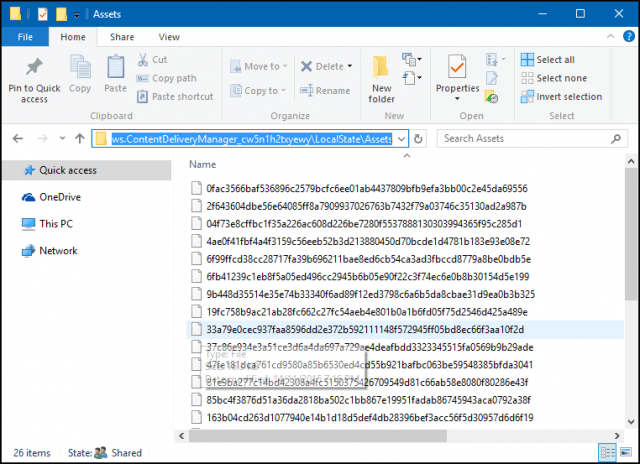
Open the folder containing the blank Files, click File menu > Open Command Prompt > Open Command Prompt as administrator.
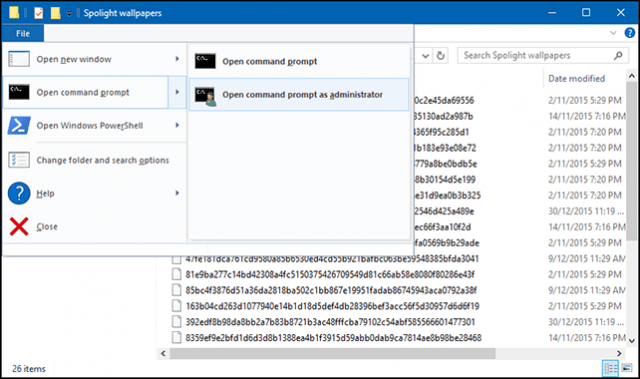
Type the following command: Ren *.* *.jpg and hit Enter. This batch command will convert the blank files to JPEG images and make them visible.
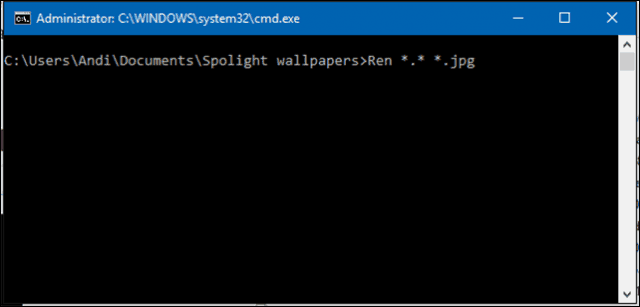
Your mileage might vary, though. I don’t know if it’s because I am using a limited data plan, why I don’t have many of these Spotlight images stored. Some of the files will be asset images used as resources for app icons; you can delete what you don’t need.
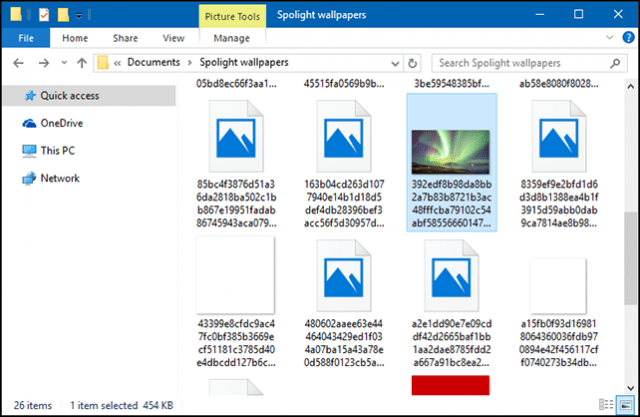
You can periodically check the folder for new images. If you want an easier way to obtain new wallpapers for your desktop, check out our article on downloading and installing Installing Windows Themes.


